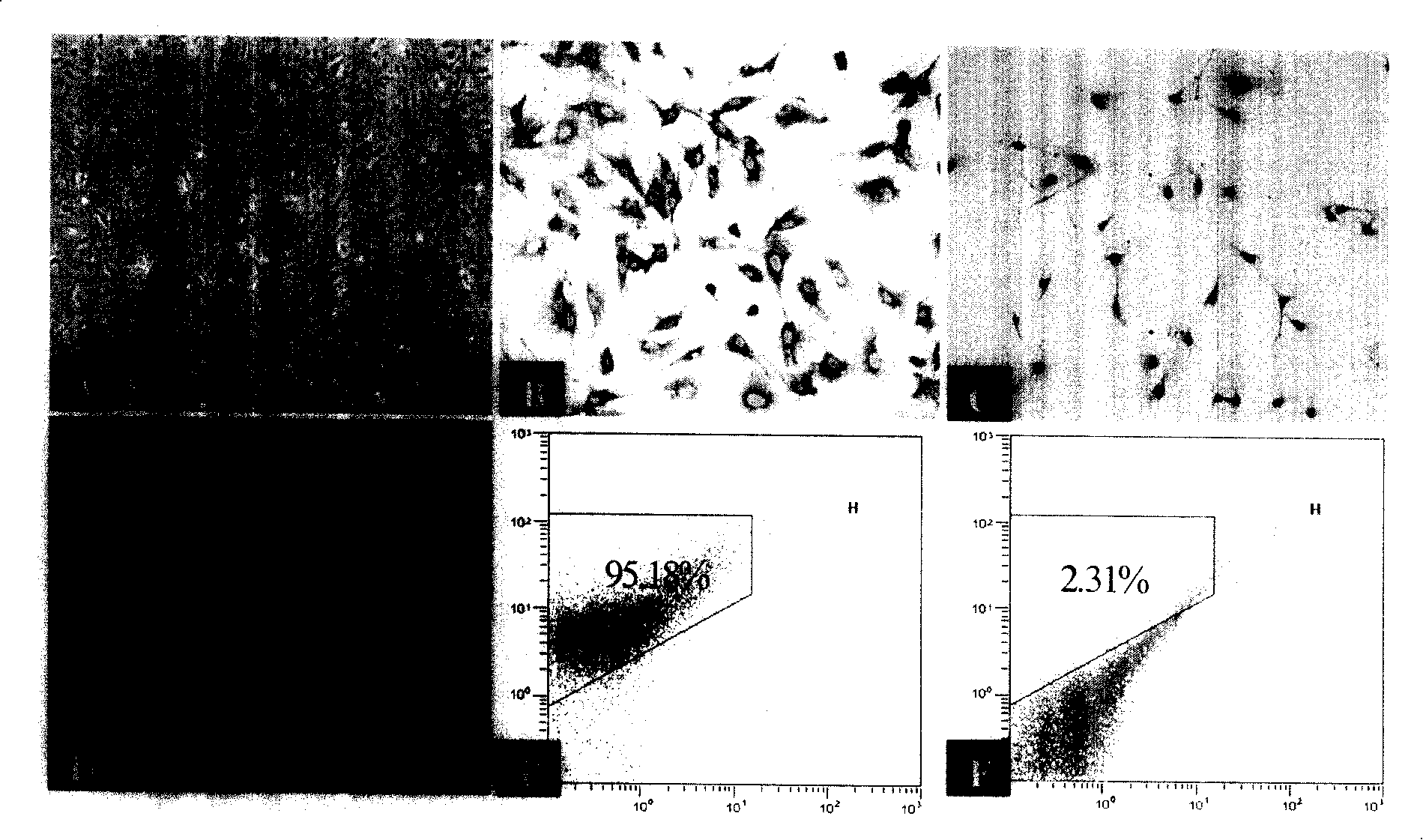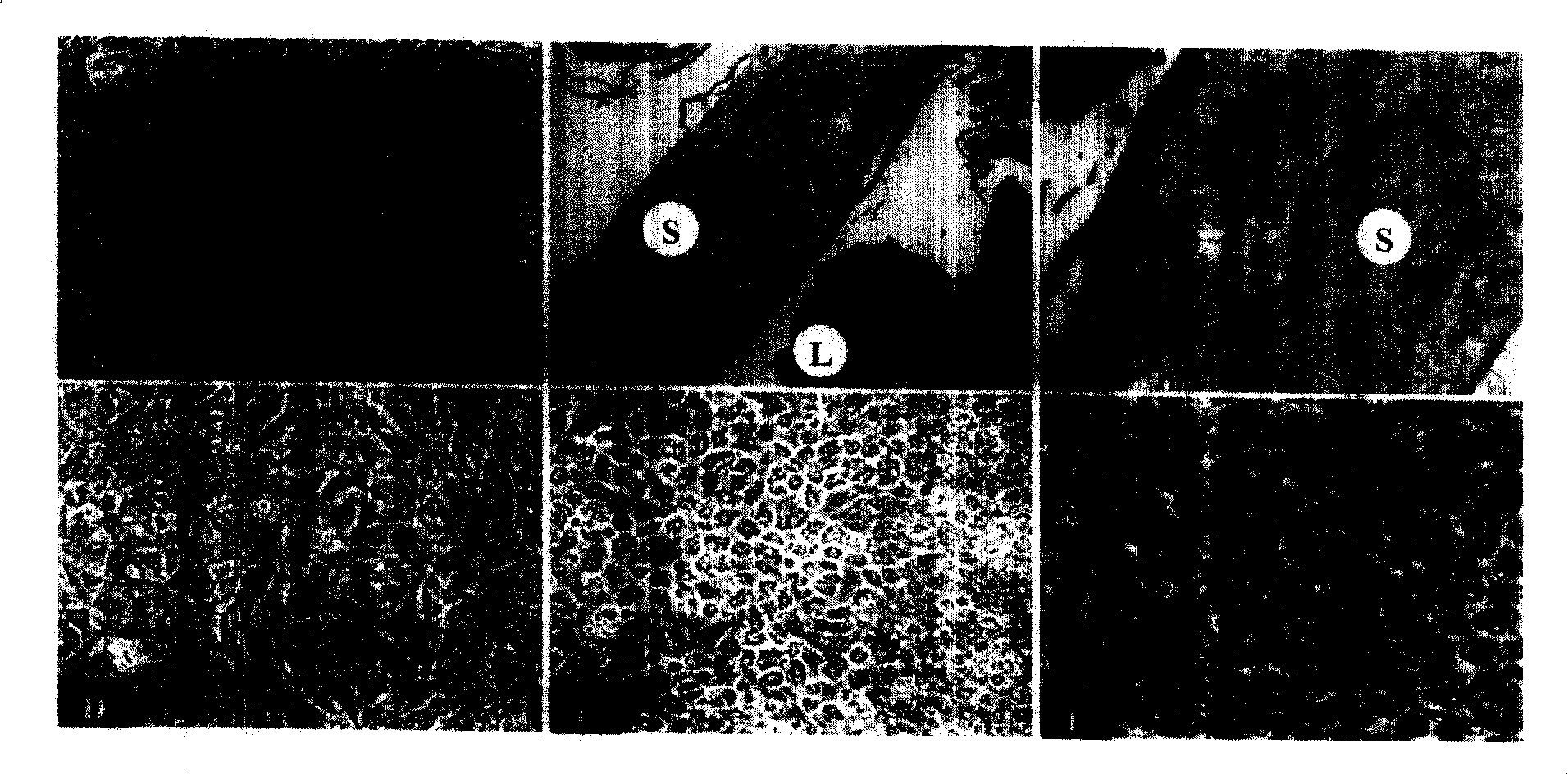Tissue-engineered androgen secretory tissue implant
A tissue engineering and secretory tissue technology, applied in the field of medicine and biomedical engineering, can solve problems such as inability to achieve therapeutic effects and short-term maintenance of hormone levels
- Summary
- Abstract
- Description
- Claims
- Application Information
AI Technical Summary
Problems solved by technology
Method used
Image
Examples
preparation example Construction
[0060] A preferred preparation method is to cut the testis into small pieces, digest it with 0.3% compound collagenase until all the tissue structures disappear and become muddy, filter through a Φ100 μm filter screen, centrifuge the filtrate, and get the precipitated cells to inoculate and cultivate, serum-free DMEM / F12 ( 1:1) after 24 hours of culture, all adherent cells were collected to obtain co-cultured testicular somatic cells.
[0061] A more preferred preparation method is to separate and cultivate LC and SC to obtain LC and SC respectively, both of which have a purity of 90-100%, and mix them according to a ratio of 1:0.01-30 to obtain co-cultured testicular somatic cells, a preferred The ratio of LC to SC is 1:0.1-1.
[0062] Testicular Somatic Cell Mass Uses
[0063] The testicular somatic cell population provided by the present invention is a new seed cell, which can be used to construct tissue-engineered androgen-secreting tissue, which is a complex of testicula...
Embodiment 1
[0089] Preparation of Testicular Somatic Cell Population I - Direct Adherence Co-culture Method
[0090] The rat testis tissue from which the buffy coat was removed was digested with 0.25% collagenase NB4 (Serva, Germany) and the tissue amount at a ratio of 1:1 at 37°C and 100 times / min until the shape of the testis tissue disappeared completely and became muddy, adding 3 times the volume of PBS to stop the enzyme digestion, filter with a stainless steel filter with a pore size of 100um, centrifuge at 1500 rpm for 5 minutes, discard the supernatant, and inoculate the obtained cells in a culture dish, with DMEM / F12, 37 Cultivate under the conditions of ℃, 5% CO2 and saturated humidity, change the medium for the first time after 24 hours, continue to cultivate in the original medium and culture conditions until 72 hours, and the obtained cells are the testicular somatic cell population obtained by direct adherent co-culture.
[0091] Observation under an inverted phase-contrast ...
Embodiment 2
[0093] Preparation of testicular somatic cell population II-LC mixed with SC
[0094] (1) LC separation and culture
[0095] The rat testis tissue from which the buffy coat was removed was digested with 0.25% collagenase NB4 (Serva, Germany) and the amount of tissue at a ratio of 1:1 at 37°C and 100 times / min until the shape of the testis tissue just disappeared, and the seminiferous tubules When the tissue is loose, but the seminiferous tubules are continuous without obvious breakage, add culture medium or PBS twice the volume of the digestion suspension to stop the digestion, filter through a Φ=30 μm stainless steel filter, and centrifuge the filtrate at 1500 rpm for 5 minutes. The resulting pellet was inoculated with 20 cm of cells per gram of testicular tissue 2 inoculation density. 37°C, 5% CO 2 , 95%O 2 Under the condition of 100% humidity, serum-free DMEM / F12 (1:1) culture solution was cultured for 2 hours, and the supernatant and unattached suspension cells were di...
PUM
| Property | Measurement | Unit |
|---|---|---|
| diameter | aaaaa | aaaaa |
Abstract
Description
Claims
Application Information
 Login to View More
Login to View More - R&D
- Intellectual Property
- Life Sciences
- Materials
- Tech Scout
- Unparalleled Data Quality
- Higher Quality Content
- 60% Fewer Hallucinations
Browse by: Latest US Patents, China's latest patents, Technical Efficacy Thesaurus, Application Domain, Technology Topic, Popular Technical Reports.
© 2025 PatSnap. All rights reserved.Legal|Privacy policy|Modern Slavery Act Transparency Statement|Sitemap|About US| Contact US: help@patsnap.com



